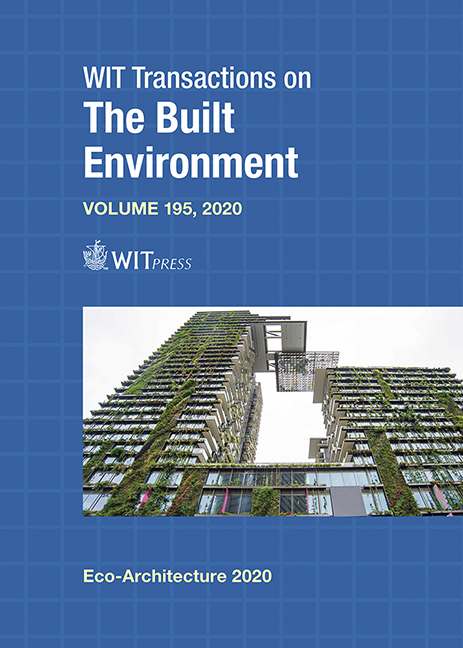GREEN FAÇADES: BENEFITS, INDICATORS AND DESIGN PARAMETERS
Price
Free (open access)
Transaction
Volume
195
Pages
12
Page Range
137 - 148
Published
2020
Paper DOI
10.2495/ARC200111
Copyright
WIT Press
Author(s)
VALERIA A. MOREIRA-ZAMBRANO, DAVID MORENO-RANGEL
Abstract
In the next five years, according to the World Meteorological Organization, the global average temperature will rise between 1.2°C and 1.3°C above the pre-industrial period. For the United Nations, if we support the latest analysis, we can reduce carbon emissions and stop the increase in the average annual temperature to below 2°C. The United in Science Report, issued at the Climate Action Summit, showed the importance of developing actions that could stop global warming and the effects of climate change. In the topics exposed, it proposed acting through local and city actions, which allow the mitigation and resilience at the urban and local levels, focused on low-emission buildings and urban infrastructure; where vertical gardens allow carrying out these actions. The green façades not only reduce the effects of global warming, but also help to improve indoor and outdoor comfort. Beyond the aesthetic benefits, they allow the increase of local biodiversity, food production, decrease pollution rates, help acoustic and thermal insulation of internal spaces and benefit energy savings. The objective of this research is to analyze how vertical gardens act in the outdoor areas, comparing the indicators and design parameters that establish the environmental certifications, such as LEED, BREEAM and CASBEE. The methodology for the research is developed in three stages: (i) study of the vertical garden as a mitigating element of the heat island effect and external comfort; (ii) analysis and comparison of environmental certifications, to know what are the indicators and design parameters that they consider for the implementation of green façades; and (iii) quantitative and qualitative benefits of the implementation of green façades in urban environments from the results obtained through a simulation in the ENVI_MET software, applied to a specific case study. According to the analysis based on the simulation performed, the use of these vegetable skins in small percentages (10–20%) minimally improves exterior comfort.
Keywords
green façades, indicators, parameters, LEED, BREEAM, CASBEE, ENVI_MET





